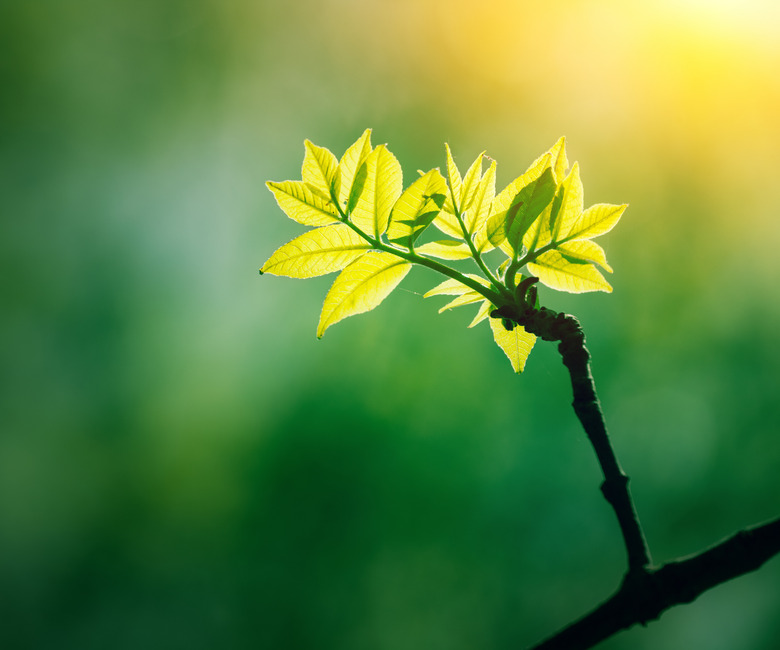What Is Produced As A Result Of Photosynthesis?
All living things consume energy in order to survive. Animals get their energy from the food they eat, but plants must absorb energy in a different way. Though plants use their roots to pull water and some nutrients from soil, the majority of plants' energy comes from the sun. Plants are able to convert sunlight into usable energy, in the form of glucose, due to the structure of their cells and a process called photosynthesis.
TL;DR (Too Long; Didn't Read)
Plants get most of the energy they need to survive via a two-stage process called photosynthesis. In the first stage, called the light-dependent reaction, sunlight is converted into two molecules. In the second stage, called the light-independent reaction, these molecules work together to form and synthesize glucose. Glucose is a sugar that plants use for energy.
How Photosynthesis Works
How Photosynthesis Works
The cells of plants and animals differ slightly, in structure. For example, certain plant cells contain organelles called plastids, which help the cells store energy. Chloroplasts are plastids that contain the green pigment chlorophyll. This pigment is responsible for absorbing sunlight during the process of photosynthesis.
Photosynthesis is a two-stage process. The first stage of photosynthesis is called the light-dependent reaction because sunlight must be present in order for the reaction to occur. During this stage, chloroplasts absorb and trap sunlight, converting it into chemical energy. Specifically, the light is converted into two molecules to be used during the second stage of photosynthesis. These two molecules are nicotinamide adenine dinucleotide phosphate (NADPH) and adenosine triphosphate (ATP).
The second stage of photosynthesis is called the light-independent reaction because sunlight is not necessary for it to occur. In this stage, the two molecules formed during the light-dependent reaction work together to produce glucose. Hydrogen atoms from NADPH help to form the glucose, while ATP provides the energy necessary to synthesize it.
The Importance of Glucose
The Importance of Glucose
Glucose is a sugar that many plants, animals and fungi use for energy. In plants, glucose is produced as a result of photosynthesis. Plants need the energy glucose provides in order to grow and reproduce. Glucose is also required for the process of cellular respiration, in which plants convert carbon dioxide from the air into oxygen.
Because plants rely on sunlight to make glucose, inadequate sunlight can be a problem for plants that live in shady or cloudy areas. To deal with this problem, most plants store glucose inside their bodies to use when sunlight is scarce. Plants usually store glucose as starch. Starch granules can be found inside plant cells, in organelles called amyloplasts.
Without glucose, plants would not have the energy necessary to grow, reproduce or carry out cellular respiration. This means that without glucose, plant life could not exist on Earth.
Cite This Article
MLA
Cook, Maria. "What Is Produced As A Result Of Photosynthesis?" sciencing.com, https://www.sciencing.com/produced-result-photosynthesis-7189979/. 17 April 2018.
APA
Cook, Maria. (2018, April 17). What Is Produced As A Result Of Photosynthesis?. sciencing.com. Retrieved from https://www.sciencing.com/produced-result-photosynthesis-7189979/
Chicago
Cook, Maria. What Is Produced As A Result Of Photosynthesis? last modified March 24, 2022. https://www.sciencing.com/produced-result-photosynthesis-7189979/
